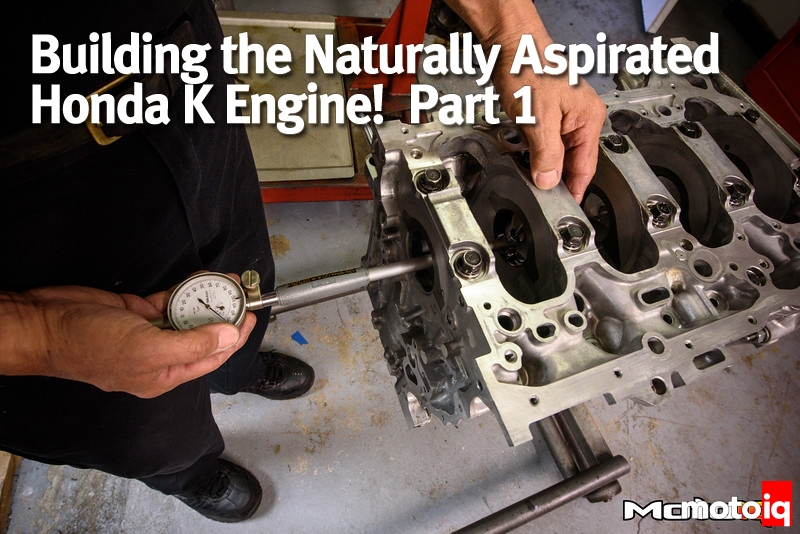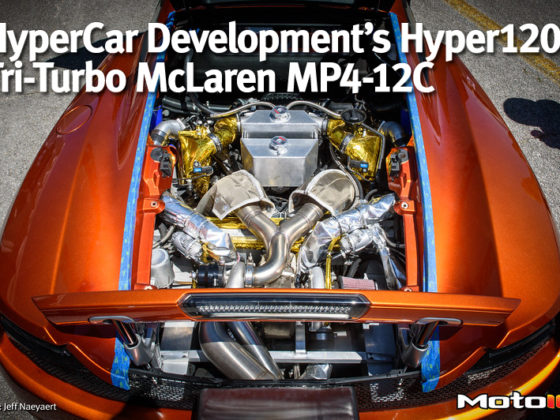
Building the Naturally Aspirated Honda K Engine! Part 1
The Honda K series of engines is one of our favorites and one of the top production inline 4 engines ever produced in our opinion. Last year we built a turbo K24 Z7 for a giveaway by Motovicity. With the turbo project being put to bed we got another opportunity to build a K motor, this time in the form of a naturally aspirated K24 Z7.
One of our associates drives an Ariel Atom in Time Attack. If you are not familiar with the Ariel Atom it is an open wheeled, street legal tube frame car which is a minimalistic open air automotive equivalent to a motorcycle. It is small, lightweight and very fast.
The Atom had been modified with significant front and rear wings and Hoosier slicks which greatly increased the cornering speed. However, the drag was also increased greatly and the engine was in dire need of some power upgrades.
The big issue was the K24 Z7. Although the Honda K engine is perhaps the greatest mass produced 4 cylinder engine ever, the Z7 variant has been neutered by the corporate types at Honda.
The earlier versions of the engine like the K20A2 had one of the best-flowing cylinder heads ever found on a production 4 cylinder and when combined with Honda's i-VTEC variable cam timing and phasing system could be easily built into screaming 250 whp all motor pump gas screamer with off the shelf parts.
The K24 Z7 still produces a respectable amount of power in stock form at about 170 whp and 150 ft lbs of torque but it's naturally aspirated power potential has been stripped by Honda who in an effort to both contain costs and meet ever-tightening emissions requirements, removed the Vtec system from the exhaust side of the engine and cast the cylinder head with a restrictive log type exhaust manifold stuck on its side. No more effective headers for the Z7!
Now our mission is the build the Z7 to its former glory. Our goal is to make 250 whp on 91 octane pump gas in a package that is reliable doing hot laps all day in a super lightweight, slick shod, heavily aero fun machine.
Watch how we get this done!
Read Part One Here!
Read Part Two Here!
Read Part 3 Here!
Read Part 4 Here!
 To keep the K24's bearings happy in a chassis the can pull over 2 g's in a corner, we decided that no amounts of oil system trickery with baffled wet sump pans, crank scrapers and windage trays with Accusumps was going to work, especially on courses that might see high G loading for several seconds like Cal Speedway.
To keep the K24's bearings happy in a chassis the can pull over 2 g's in a corner, we decided that no amounts of oil system trickery with baffled wet sump pans, crank scrapers and windage trays with Accusumps was going to work, especially on courses that might see high G loading for several seconds like Cal Speedway. We had to bite the bullet and go dry sump even though this was a major expense. We chose Dailey Engineering for our system both for their excellent reputation and the fact that they had an off the shelf solution available for our K engine.
 We started off with a Dailey Engineering 4 stage pump which has 3 scavenge stages and one pressure stage.
We started off with a Dailey Engineering 4 stage pump which has 3 scavenge stages and one pressure stage. The Dailey pump is a roots type design. A Roots pump has the potential to flow 50% more in the same area as a gerotor or gear impeller pump. The roots' superior flow gives more crankcase vacuum than any other pump on the market per given size. This allows a Dailey pump to be smaller. lighter and more compact than any other pump on the market per given flow capacity.
The pump's housings and rotors are machined from 7075-T6 aluminum giving them constant clearances across the temperature range. The scavenge section is internally ported to minimize the amount of outlet fittings needed. The pump shafts are turned by bronze spur gears and are supported by ball bearings on the ends and teflon bushings in between stages.
The pump also has Dailey Engineerings unique centrifugal air oil separator which helps ensure that most of the air is removed from the oil before it is pumped into the tank.
 The Dailey oil pan also serves as the bracket for the pump and is CNC machined from billet. This helps clean up the front of the engine from unneeded bracketry.
The Dailey oil pan also serves as the bracket for the pump and is CNC machined from billet. This helps clean up the front of the engine from unneeded bracketry.The strong pan also gives the main cap area of the block additional structural integrity.
 The pan has windage traps and helps the pump efficiently and quickly evacuate the frothy air and oil mix from the crankcase. By reducing windage and by having a vacuum in the pan which improves ring seal, dry sump systems also typically increase power by 5 to 15 hp.
The pan has windage traps and helps the pump efficiently and quickly evacuate the frothy air and oil mix from the crankcase. By reducing windage and by having a vacuum in the pan which improves ring seal, dry sump systems also typically increase power by 5 to 15 hp. By pumping everything out of the crankcase, air oil and whatever can be sucked out, de-aerating it and pumping solid air-free oil back to the engine, the dry sump ensures that the engine will be properly lubricated no matter what G loads it might encounter.



